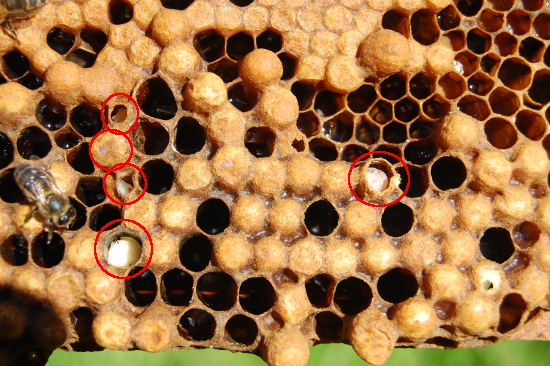This is the current configuration of #1. This link discusses the common variations. However, nowhere have I seen this set-up. It did not come about by choice. When I harvested the honey last fall there was still brood in the medium box so I left it. I have checked many times and there has persistently been brood in the medium. I left the bottom deep box in hopes that the queen and court would move into it.
Then I had my nuc. I put the five frames into a deep box with follower boards to limit the space and put it in place of #3. Well, as you faithful readers know, the colony lost its queen, so I used a newspaper combination in order to save the remaining bees. I expected them to all move into the lower boxes and then I would take off the deep and have a single deep brood box.
So...
Yesterday I took a look into #1. On previous inspections the bottom deep had only drawn comb and some honey and pollen. If that had still been the case, I planned to do a lot of manipulation to get one deep brood box. If the brood was gone from the medium, then I would rearrange to two deeps.
But the bees were not privy to my intentions. There was brood in all three boxes! I saw my (lovely) queen in the top deep box. There was a fair amount of drone brood as well as worker in the bottom box. What to do? I added enough frames to make 10 in the top deep and left it as it was.
I did see a lot of uncapped drone brood and many with holes in the cap.
This picture is from another website and shows both uncapped larvae and caps with holes.
I figured there must be a moderately high mite count. Since I had intended to do a spring mite treatment anyway, I did not do a count but just put in Mite-away Quick strips. I had to do some thinking about where to place them since the instructions say to place them between the two brood boxes; no suggestions for three boxes. I did a bit of chemistry research and learned that formic acid fumes are heavier than air. I put the strips between the medium and top super. I also took out the entrance reducer to provide proper ventilation.
Olea's continues to go like gangbusters. There were a total of 15 bars. I saw brood on bar 14. I added two more bars; 17 total now.
There continues to be sporadic activity around the swarm traps.












